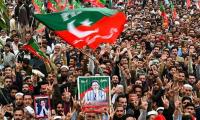China rejects Indian request for disengaging troops from Pangong Tso, a few other friction points
Muhammad Saleh Zaafir
ISLAMABAD: The 11-hour uninterrupted fifth round of talks between China and India has failed to produce any outcome on the Ladakh standoff. China has turned down India’s request for disengaging troops from Pangong Tso and a few other friction points in eastern Ladakh. Senior commanders of the two armies held intense negotiations at a designated meeting point in Moldo on the Chinese side of the Line of Actual Control (LAC). The Indian delegation urged that restoration of status quo ante in all areas of eastern Ladakh was key to overall ties between the two countries, and that Beijing must ensure complete disengagement of its troops from the remaining friction points. China declined to offer any assurance to the Indians. Well-placed sources revealed on Monday that the Chinese Army had pulled back from Galwan Valley and certain other areas, but withdrawal of troops had not moved forward from the Finger Four and Eight areas in Pangong Tso as demanded by India. China also has not completed withdrawal of troops from Gogra areas. The focus of the failed talks was on finalising modalities for further de-escalation, and disengagement of troops from various friction points, sources said. The Chinese side was headed by Major General Liu Lin, Commander of the South Xinjiang military region, while the Indian delegation was led by Lt Gen Harinder Singh, the Commander of the Leh-based 14 Corps. The previous round of the corps commander-level talks took place on July 14 and these lasted for nearly 15 hours. The military talks took place 10 days after both sides held another round of diplomatic parleys on the border issue. Last week, India rebutted China's claim that the disengagement process was completed at most locations. In the last three weeks, India has significantly ramped up troops and weaponry in the areas around Daulat Beg Oldi and Depsang Valley in commensurate with deployment of troops by China's People's Liberation Army. During the military and diplomatic talks, India has also been demanding withdrawal of Chinese troops from Depsang, the area which they got vacated in 2013. India began sending reinforcements to Depsang and the areas around DBO in mid- May when tension between the two sides gradually escalated, and the deployment has been significantly ramped up with several thousand troops, tanks and artillery guns in the last two months, sources said. However, the situation deteriorated following the Galwan Valley clashes on June 15 in which 20 Indian Army personnel were killed as the two sides significantly bolstered their deployments in most areas along the LAC. Following the Galwan Valley incident, the Indian government has given the armed forces "full freedom" to give a "befitting" response to any Chinese misadventure along the LAC. The Indian Air Force has also moved air defence systems as well as a sizable number of its frontline combat jets and attack helicopters to several key air bases. Sources said China had also deployed its forces heavily and in some cases six time more than that of India.
Mir Attaullah Lango of Independent Panel won presidency with 457 votes
Katcha areas of Rajanpur are nothing but a liability says DC
Dr. Kamran Qureshi, stresses media’s responsibility in raising awareness
Truck Transport Union's strike has brought daily transport of 15,000 tons of coal to complete halt
Police posts and stations have come under attacks multiple times in past but all those incidents happened at night
Cases are being re-examined by DSP Siraj Lashari, officer from Rapid Response Force Hyderabad







